We may receive a commission when you use our affiliate links. However, this does not impact our recommendations.
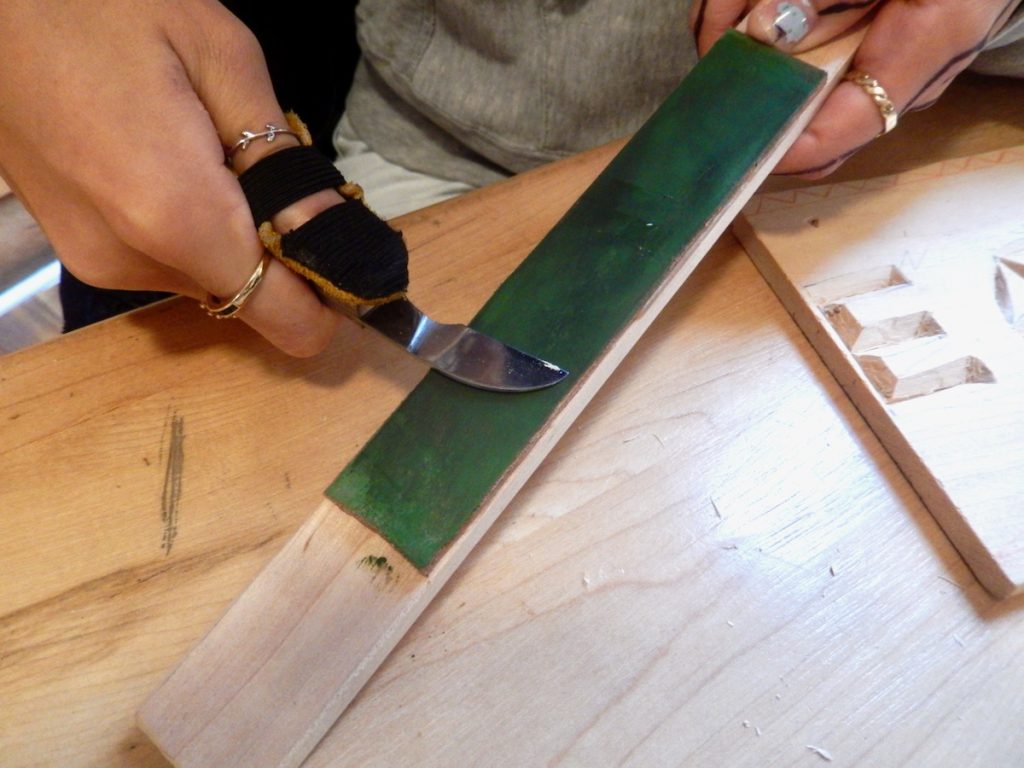
One of my students while honing a chip carving knife.
I use strops all the time to hone our many carving knives, our plane, and chisel blades, not to mention my pocket knife. Strops maintain our edges and gift them with pinnacle sharpness that lasts a long time. If you haven’t accidentally damaged your edge and need to use a more aggressive method of removing steel, then stropping can be that routing touch-up method which is fast and effortless to bring the edge back to 100% sharpness.
Carvers love their strops, and carvers who use basswood hardly ever need to call up the big sharpening guns, such as diamond or oil stones, as the strop is a very effective honing media.
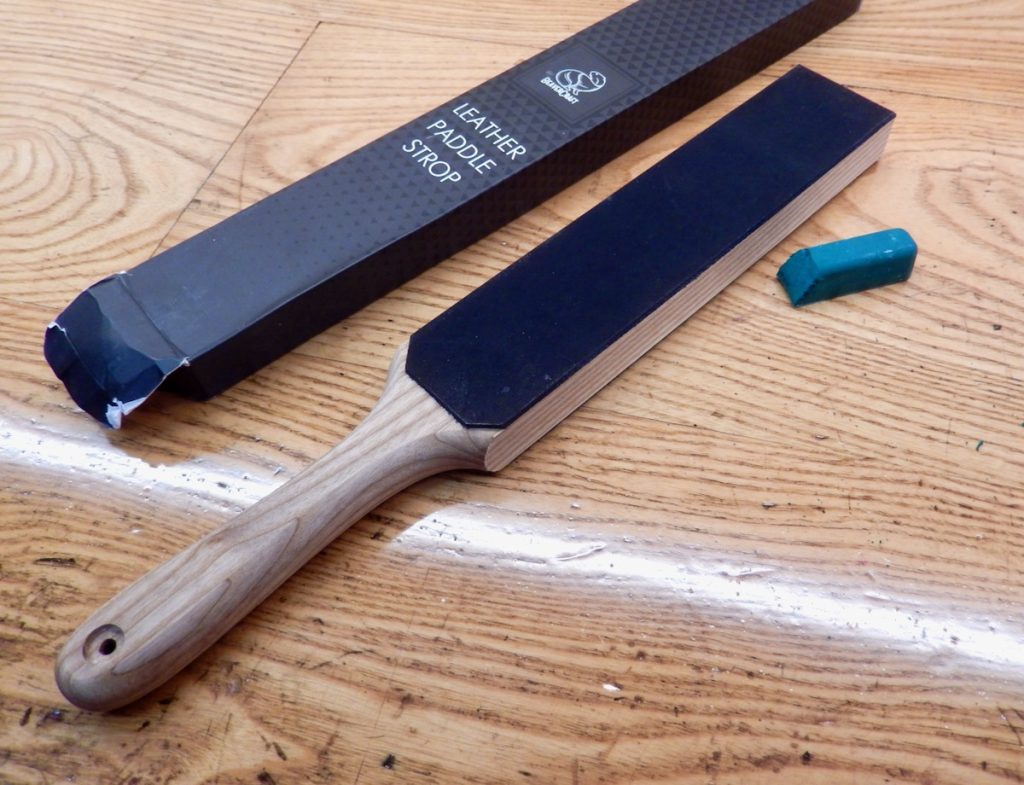
The high-quality Ukrainian-made BaverCraft strop.
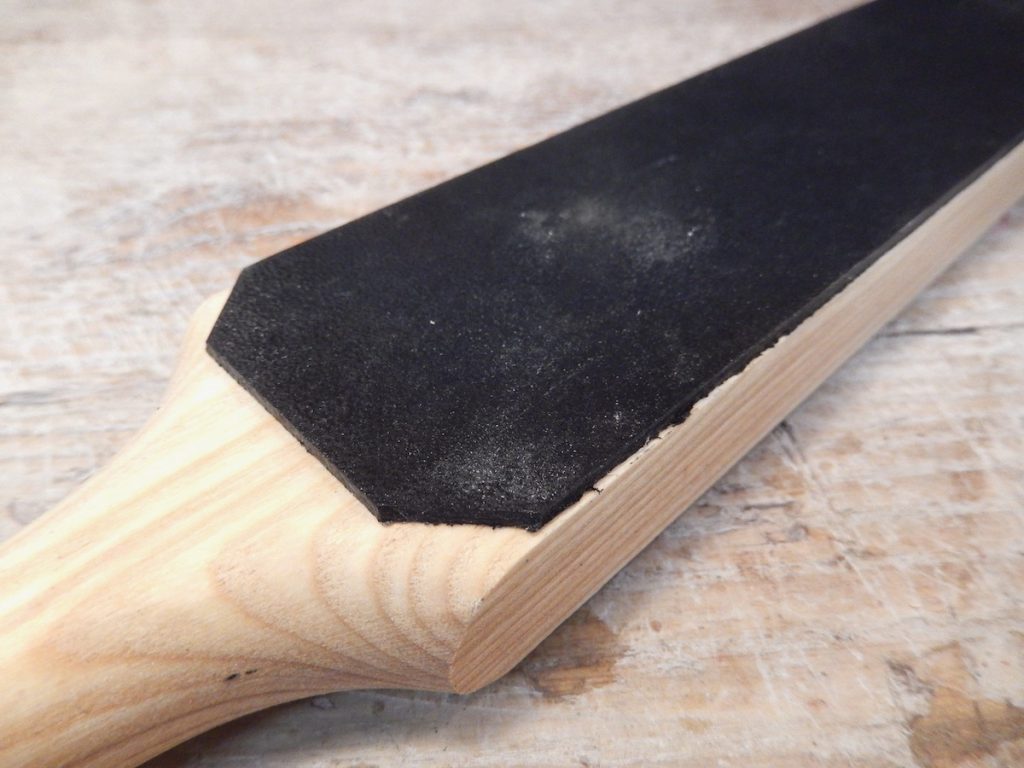
So what is a strop? A strop is a piece of leather (or artificial leather) that is charged with fine honing media. The relative softness of the leather (compared to a stone) and the micro-fine size of the abrasive that is suspended in the honing media (wax or paste) provide us with a very smooth working and forgiving honing tool. While many like to have the strop affixed to a piece of hardwood or plywood, others just use it as is.
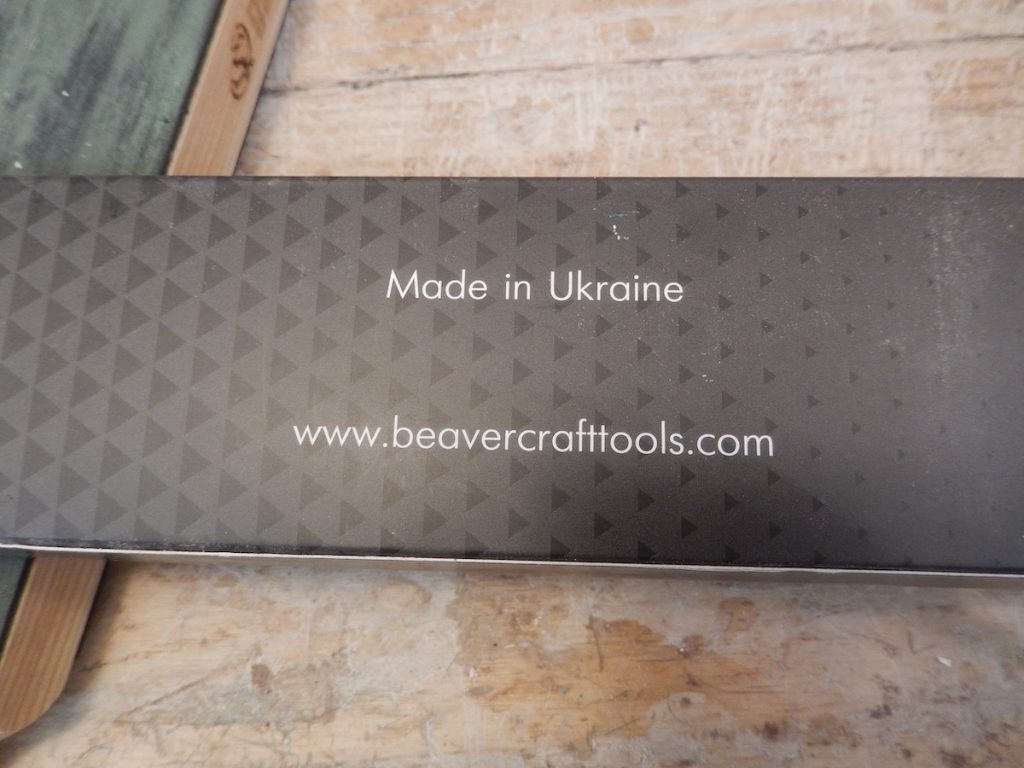
In this and the coming entries, I will review a few available stropping options, I will talk about the leather used in stropping, the compound I like, and show how to make one from scratch.
Among the commercially available strops, the Ukrainian BeaverCraft ash and leather strop is the one that I find myself using all the time. Both faces of this hefty ash pedal-looking strop are covered with black leather of medium softness. The strop arrives with a green honing compound stick which needs to be rubbed over and into the leather. To my younger student who ask about the strange-looking green stick, I say that the honing compound is like a crayon/chalk: a waxy stick that fine powdery minerals were mixed into it. The minerals are harder than the knife’s steel so once you pass its edge on the compound you abrade the steel. The finer the size of minerals, the smoother is the steel surface the strop leaves behind.
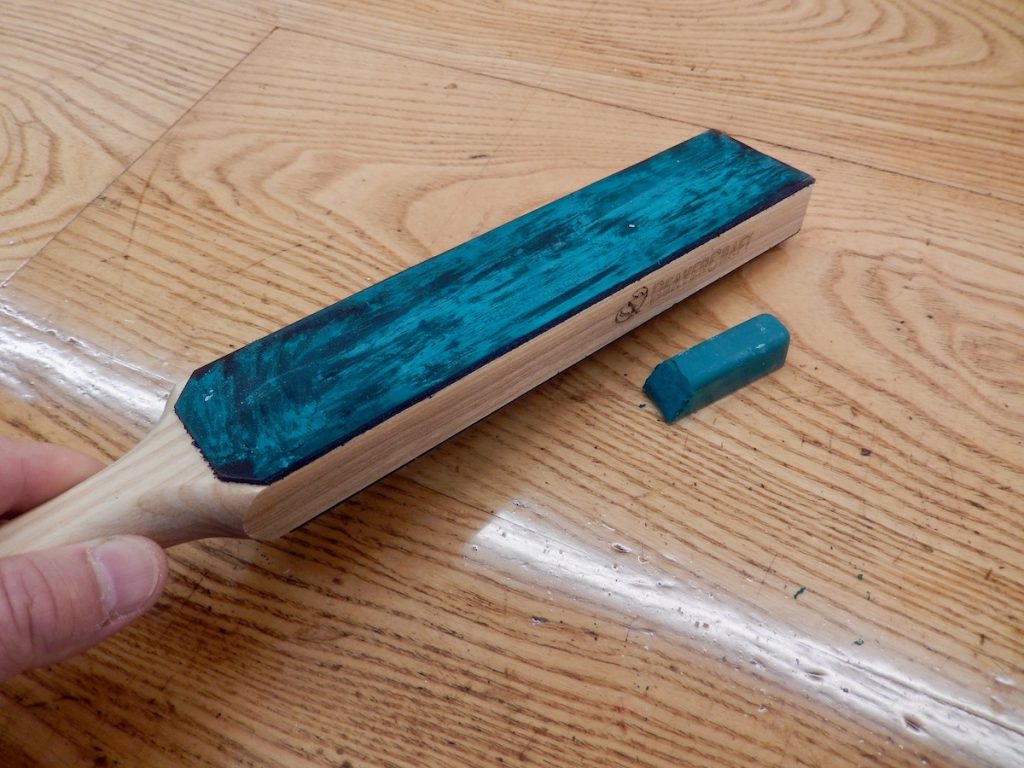
BeaverCraft’s strop charged with the honing compound that arrived with it.
Leather
Strops come in a variety of surfaces, from hard and shiny, to textured-course and to smoother suede. The Black BeaverCraft pedal strop is somewhat in between as it is a smooth surface that has a gentle give to it.
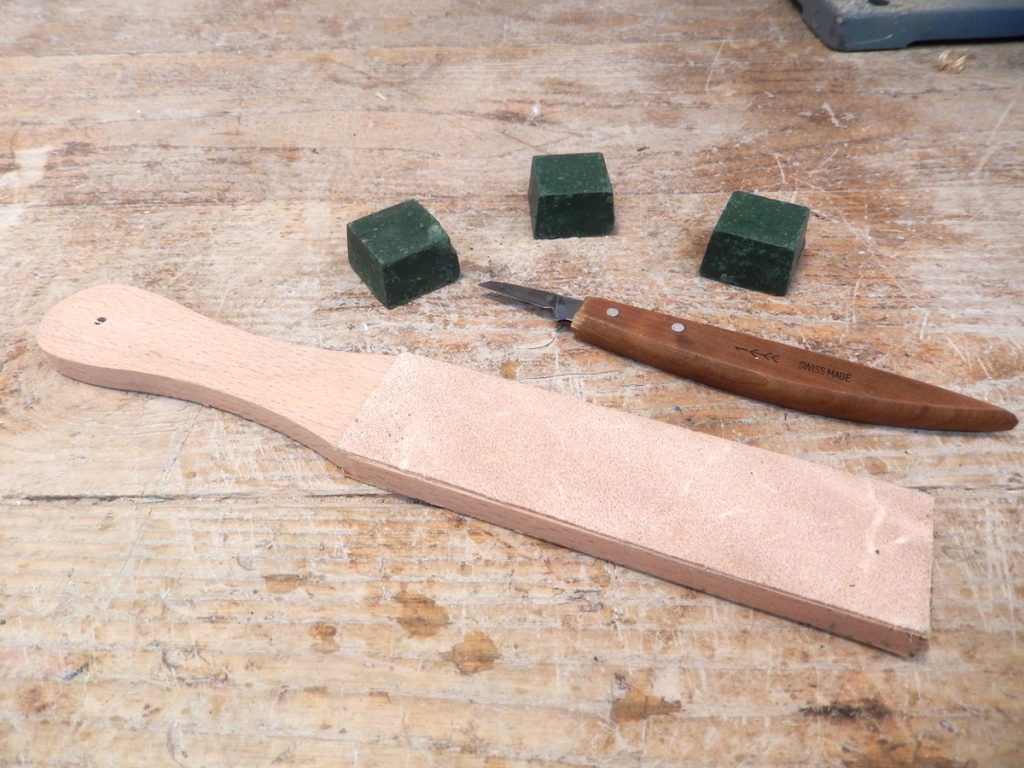
This inexpensive paddle strop has a very coarse suede surface on one side and a smooth surface on the other. I prefer the suede side as the compound just doesn’t stick to the smooth surface. The cube shape honing compound that comes with it are not very good.
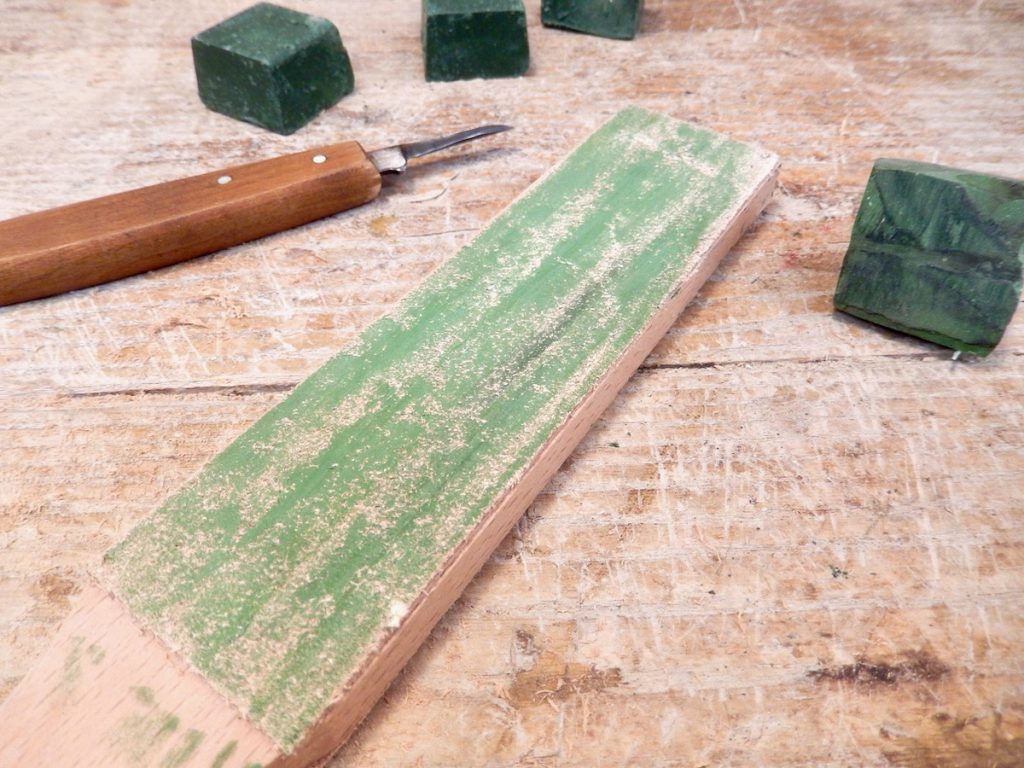
Instead of the provided compound, I used the LeeValley which spreads more or less evenly on the suede surface.
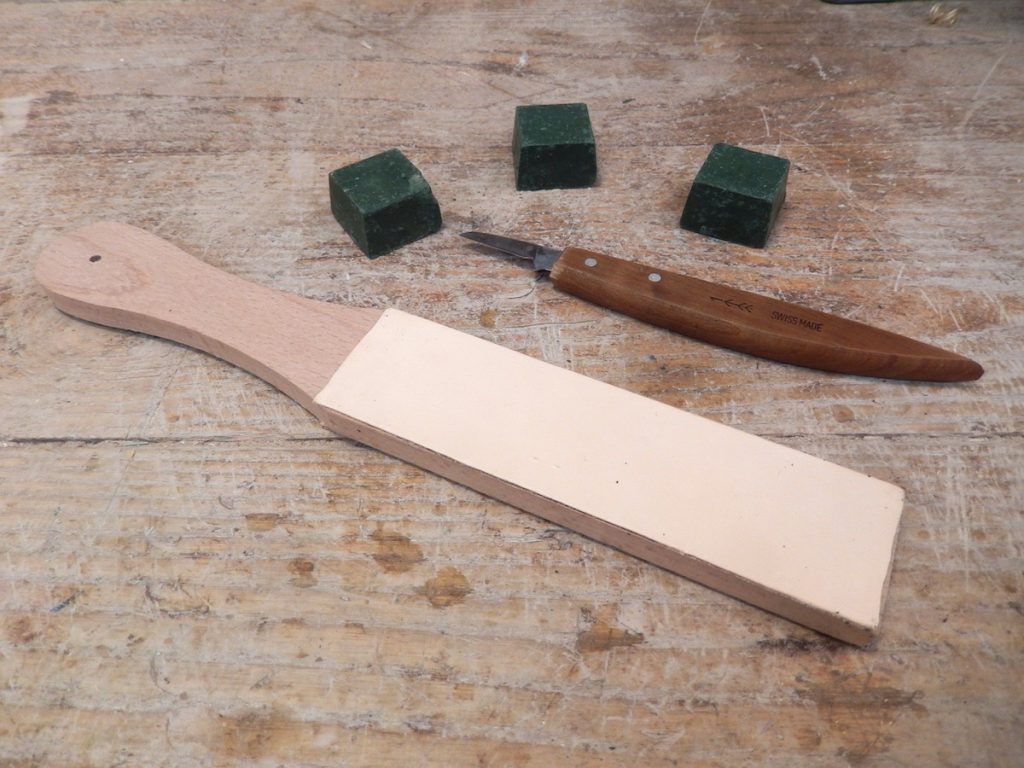
A smooth and dense piece of leather is glued onto the other side of this beach wood paddle strop.
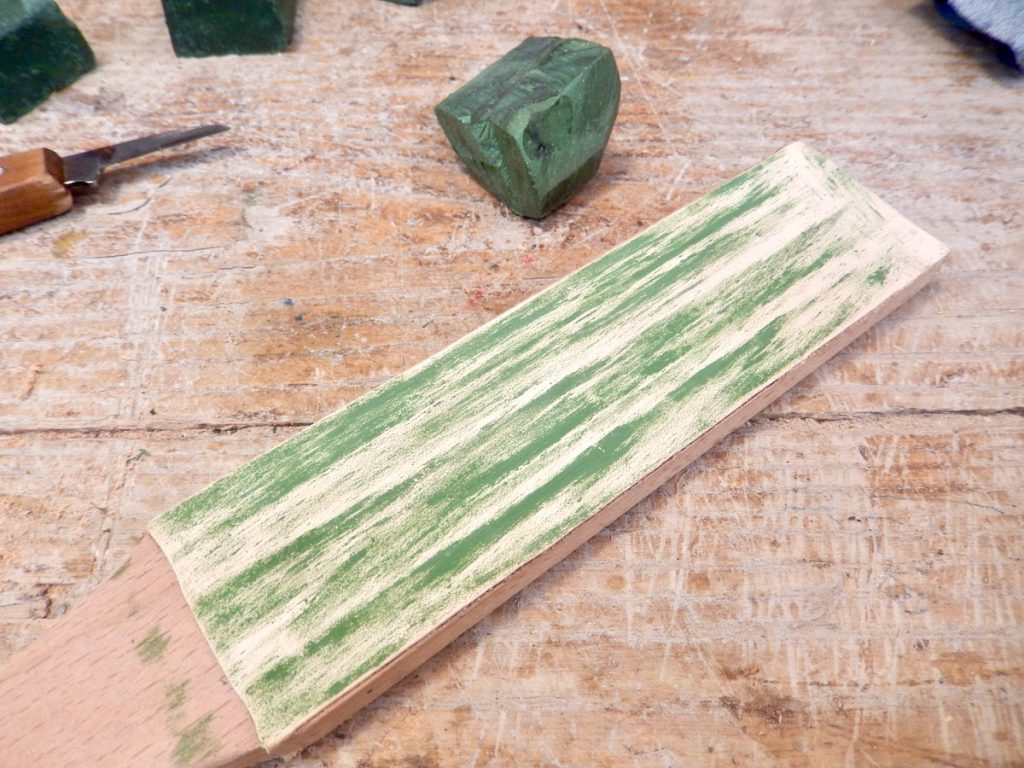
The waxy/chalky LeeValley honing compound doesn’t adhere well to the smooth side of this strop.
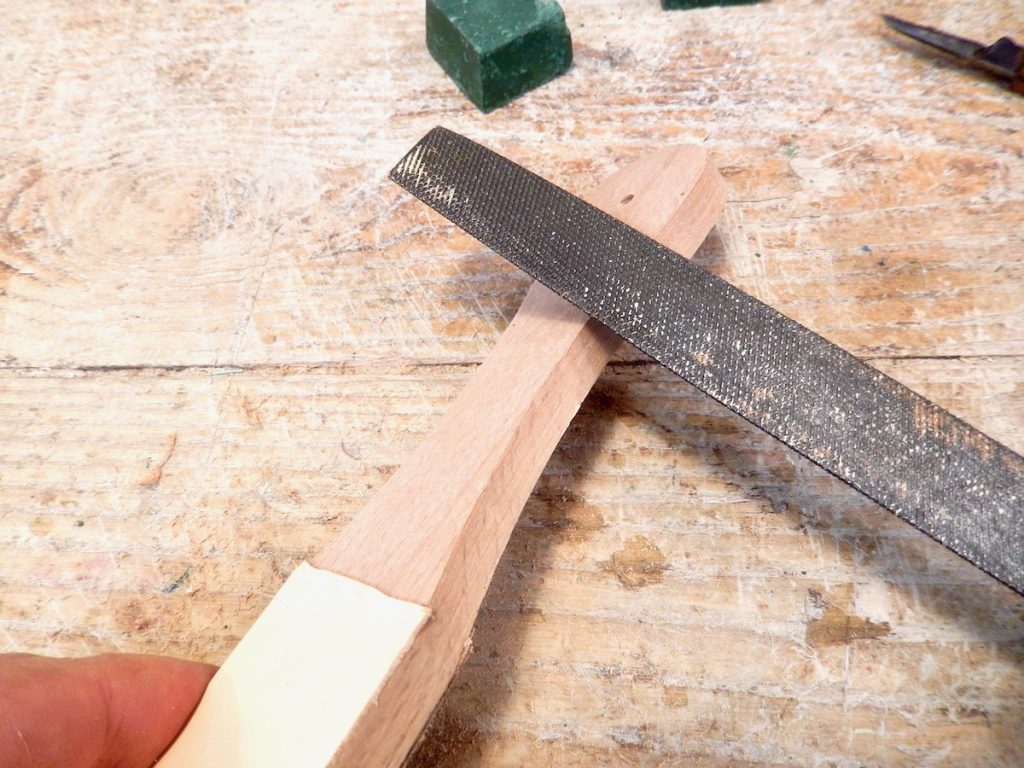
Before using this strop I chamfered its corners with a rasp and sandpaper.

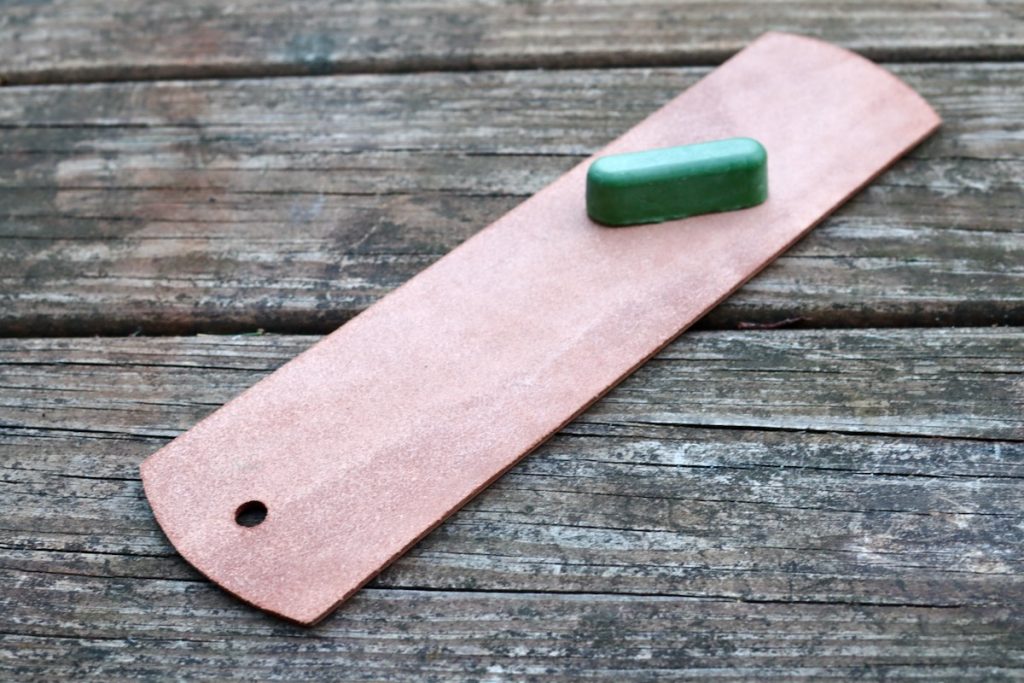
The strops that are sold by Taylor Toolworks (in this image and the three below) and Tools For Working Wood are among the hardiest that money can buy. Made of horse butt leather, one side of this skin strip is tough and smooth, while the other is suede-like.



Compounds
The most common color for strop compounds is green, but not all green compounds are the same – not in terms of overall resilience nor in their mineral content. The cube compound that came with the inexpensive $9 strop is just too waxy. The green stick that came with the BeaverCraft is quite decent, and the big and green stick that LeeValley sells is one of the best. This last stick has just the right amount of wax to cover the suede surface without flaking off as other compounds might do, plus it stays put for a long time.
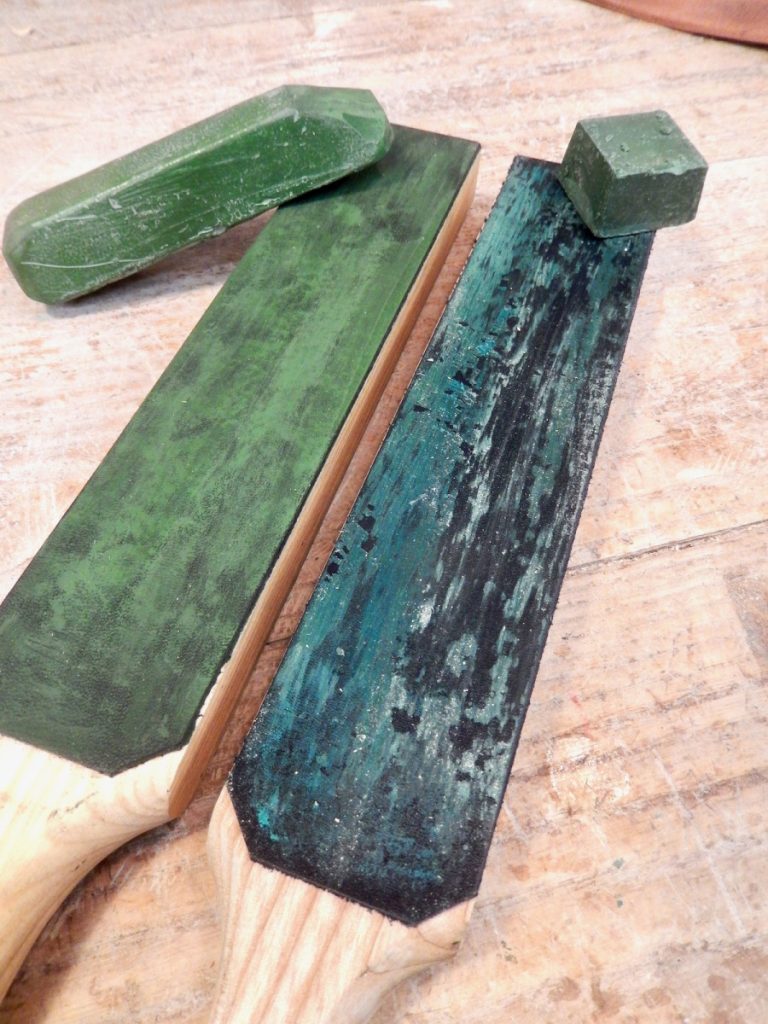
The USA-made compound stick on the left is superior to the imported cube on the right. The waxy stuff chipped off prematurely.

 This paste compound (image below) is the best stropping media that I have tried. I believe that the compound is comprised of mineral oil and abrading particles, and thus it will probably never evaporate from the leather, flack, or dry. In addition, the paste moistens and conditions the leather and provides a sustainable and homogenous honing surface. The result is a reliable surface cover that sticks to the leather and also lubricates the stropping action. On that note, many carvers condition their strop with pure mineral oil and only then rub the stick compound on it. I guess that this method is on par with the paste compound that we use.
This paste compound (image below) is the best stropping media that I have tried. I believe that the compound is comprised of mineral oil and abrading particles, and thus it will probably never evaporate from the leather, flack, or dry. In addition, the paste moistens and conditions the leather and provides a sustainable and homogenous honing surface. The result is a reliable surface cover that sticks to the leather and also lubricates the stropping action. On that note, many carvers condition their strop with pure mineral oil and only then rub the stick compound on it. I guess that this method is on par with the paste compound that we use.
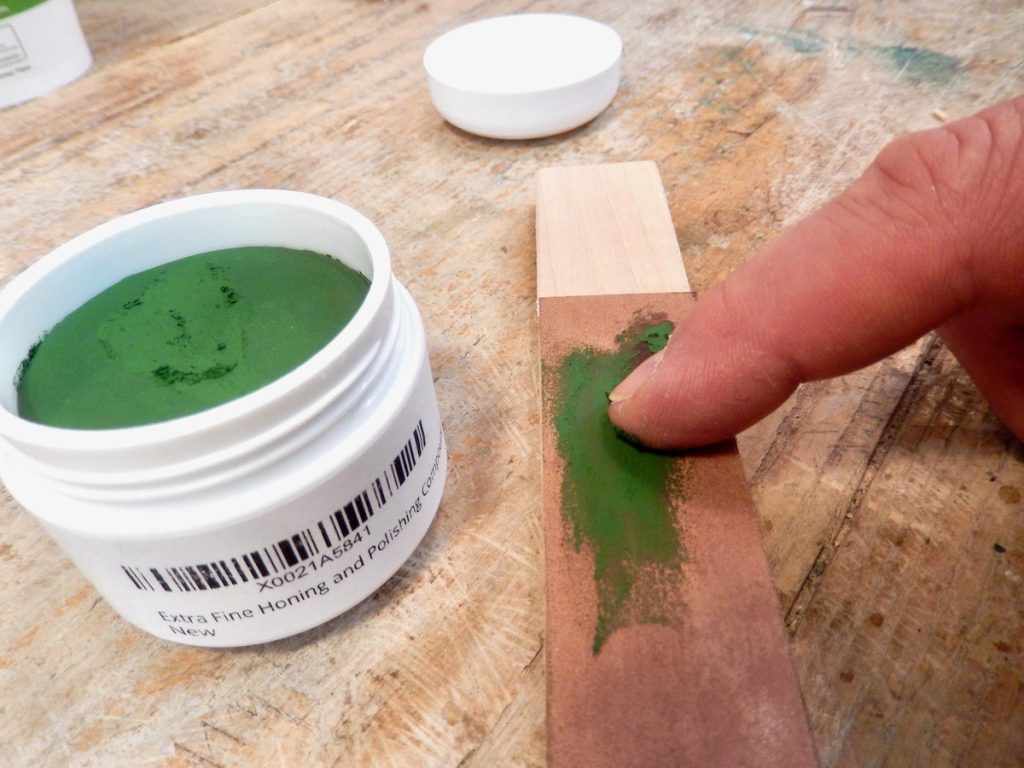

Next time I will show two more stropping options and explain how to build one out of scratch.
Here are some supplies and tools we find essential in our everyday work around the shop. We may receive a commission from sales referred by our links; however, we have carefully selected these products for their usefulness and quality.








